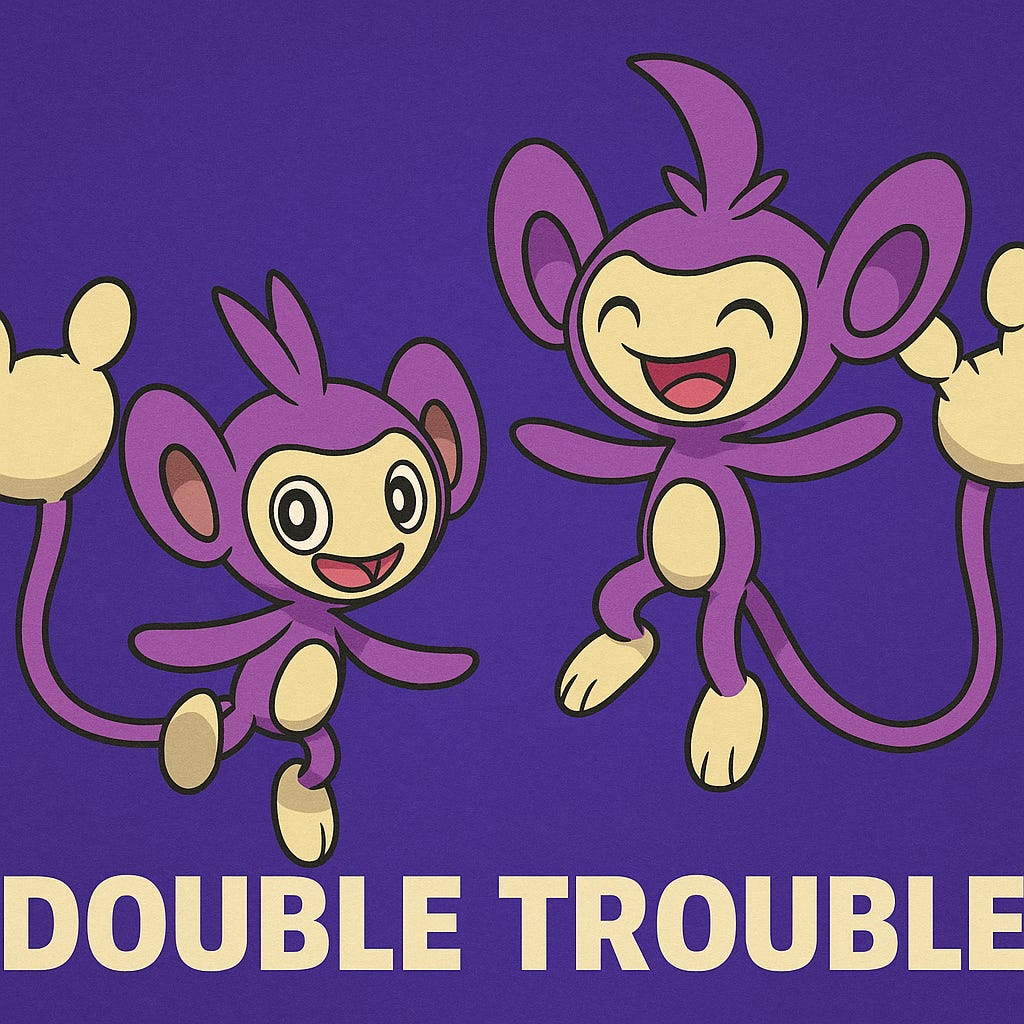“Double Trouble”
Aipom swings with a cheeky grin,
A tail that drums where games begin.
Mischief hums in playful air,
A rhythm beats without a care.
Then Ambipom with double cheer,
Two tails clap for all to hear.
From single jest to doubled song,
Their music keeps the world along.
Lore: Aipom & Ambipom — “The Rhythm of the Jungle”
Origin and Behavior
Deep in the canopy of tropical forests, where sunlight breaks in rhythm through the leaves, lives a small, violet-furred creature with a hand for a tail—Aipom.
These Pokémon are known for their playful intelligence and boundless mischief. To Aipom, life is a constant performance. They swing through trees not just for travel but for style, often competing with one another to invent new flips and tricks. The sound of tail-slaps and laughter fills the jungles where they live, a percussion that researchers call the Drumbeat Canopy.
Aipom’s tail isn’t merely prehensile—it’s expressive. Studies in Johto and Sinnoh show that it can articulate as precisely as a human hand, capable of threading vines, painting symbols on bark, or even mimicking a handshake. Tribal cultures once interpreted these markings as forest blessings, calling Aipom “the Hand of the Trees.”
Yet beneath their charm is a cunning mind. Aipom steal fruit not for hunger but for the thrill of getting away with it. Their societies are matriarchal, led by the most creative prankster rather than the strongest. In Aipom culture, humor is dominance.
Evolution: The Double Beat
When Aipom spends enough time with humans or other Pokémon in a rhythmic environment—battle training, drumming, dancing—it begins to change. Its single tail splits into two, each developing its own rhythm and reflex. This metamorphosis births Ambipom, the Double-Tailed Performer.
Ambipom’s entire identity revolves around coordination. Its twin tails move independently but harmonize like skilled percussionists. Ambipom are rarely alone; they thrive in duos or trios, forming rhythmic partnerships that can echo through entire forests. Some trainers claim that Ambipom can sense a person’s heartbeat and sync its motions to match, creating unspoken rapport in battle or dance.
Cultural Significance
In ancient Sinnoh folklore, Ambipom were seen as messengers of joy who brought balance after conflict. Villages would hang fruit garlands to invite them near before festivals—believing their laughter would drive away spiteful spirits. Their rhythmic tail clapping is said to chase off “echo ghosts” that feed on silence.
Aipom’s tail-hand also inspired traditional percussion instruments in Alola, carved from hollow gourds and played with rope-bound mallets that emulate its movements. Modern musicians still credit Aipom and Ambipom with influencing tempo-based battling, a strategy that relies on rhythm to control flow and confuse opponents.
Personality and Power
Aipom fights like a trickster—quick, evasive, and always smiling when it lands a hit. Ambipom fights like a choreographer—every strike precise, timed, and part of a larger pattern.
In coordinated groups, Ambipom can produce sonic tail-claps strong enough to disorient enemies and even crack stone, creating what researchers nickname Jungle Basswaves.
Despite their mischief, both species show surprising empathy. Many are known to comfort injured Pokémon by drumming soft rhythms until they calm. Some Pokémon Centers in Johto keep Ambipom as therapy assistants for younger Pokémon, using their rhythm to steady frightened hearts.
Symbolism
Aipom embodies the spark of creativity—unfocused, playful, raw.
Ambipom represents mastery through expression—refinement, control, and rhythm as communication.
Together, they tell a story older than humanity’s music: the evolution from noise to harmony.



